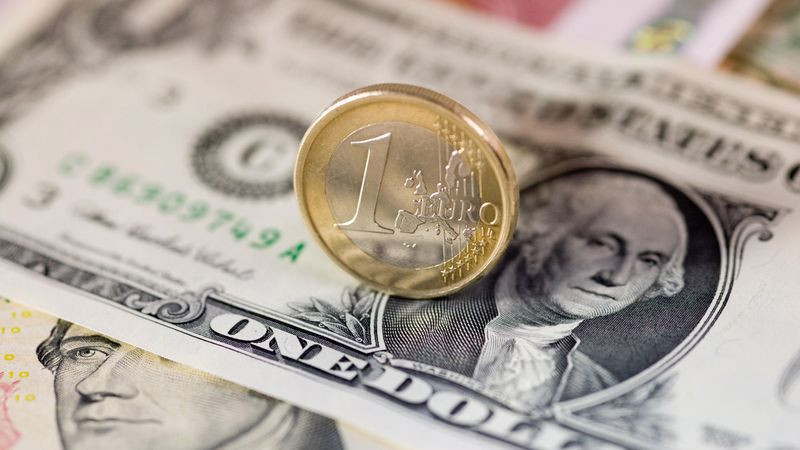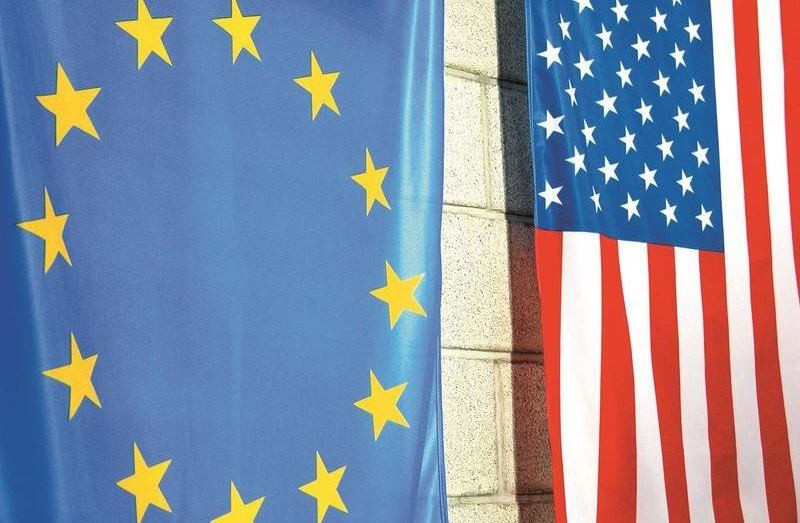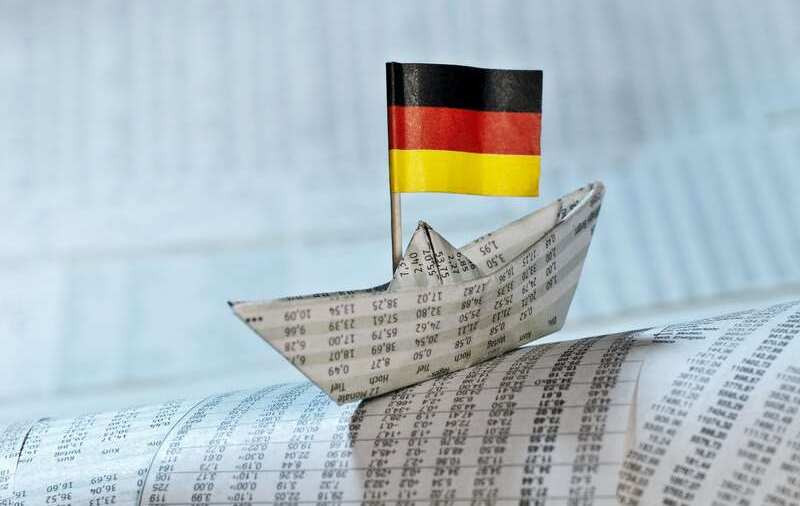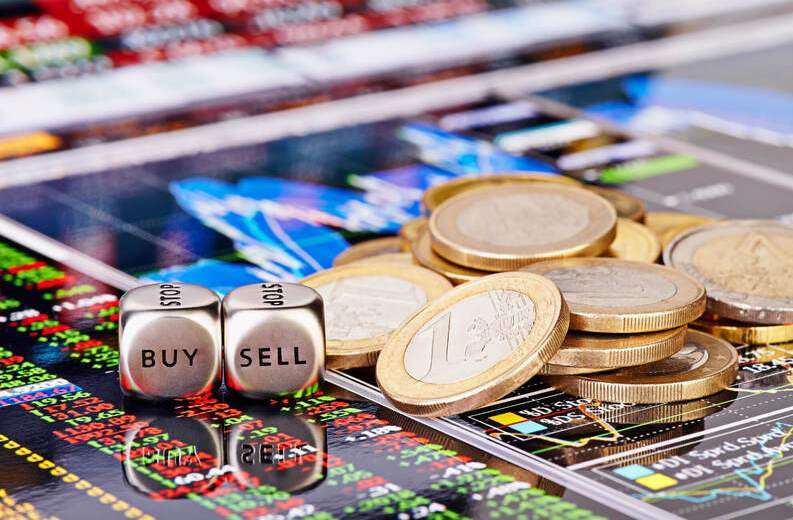The foreign exchange market is quiet, concealing an undercurrent of anticipation among investors awaiting pivotal reports from the United States.
This week will be truncated due to Good Friday preceding Catholic Easter, resulting in closures across stock exchanges in both the Old and New Worlds.
As many traders embark on holiday, spanning until Monday in Europe, attention remains fixated on the imminent release of February's core personal consumption expenditure price index data in America.
At week's end, Federal Reserve Chairman Jerome Powell is scheduled to address investors, commanding attention from those still at their posts.
Powell's remarks following the PCE report publication could sway the dollar's trajectory, an event keenly observed by market participants.
Amidst this, the greenback hovers within the 104.00–105.00 range on Thursday, oscillating as traders await pivotal U.S. data releases.
Wells Fargo strategists maintain their forecast of a weaker U.S. currency later in 2024.
"While early 2024 saw the dollar buoyed by leading U.S. economic indicators and the Fed's cautious stance on rate cuts, we anticipate a slowdown in U.S. growth throughout the year, alongside a gradual easing of inflation," remarked the strategists.
Anticipating Fed rate cuts by mid-2024, Wells Fargo cites a potential convergence of weakening U.S. growth and recovering foreign economies, exerting downward pressure on the defensive dollar.
Moreover, a scenario of diminishing Treasury yields could diminish the dollar's appeal as a safe haven asset, accentuating sentiment in broader markets.
Wells Fargo forecasts a moderated weakening of the dollar against G10 currencies later this year and into the next.
According to their projections, the euro's exchange rate against its U.S. counterpart is anticipated to reach $1.07 by mid-2024, $1.09 by year-end, and $1.12 in 2025.
So far, the greenback remains strong. It ended the first quarter as the best-performing currency in the G10.
Since the beginning of the year, USD has risen in price by more than 3%, including about 2% against the euro.
Despite a slowdown, the United States economy continues to outperform most of its global counterparts.
The Atlanta Fed's GDP Now model suggests a potential 2.1% growth for the US economy in the first quarter of 2024, following a 3.4% rise in the previous quarter.
Federal Reserve Board member Christopher Waller's recent comments, aligning with this positive economic outlook, suggest a tempered approach to rate cuts, bolstering confidence in the dollar's strength.
Notably, ING strategists view Waller's remarks as moderately hawkish, reinforcing the perception that the Fed may delay implementing rate cuts.
They emphasize the challenge of betting against the greenback in the G10 arena, suggesting a potential upward movement towards 105.00 if investor portfolio rebalancing remains limited.
Anticipation surrounding crucial US inflation data has also provided support for the dollar, with economists projecting a modest increase in the core PCE price index for February.
While expectations for Fed rate adjustments may remain stable if these projections materialize, robust PCE figures could undermine forecasts of multiple rate cuts in 2024, a scenario favorable for the dollar.
However, the market's reaction will hinge significantly on Fed Chairman Jerome Powell's post-PCE report commentary. Powell's recent attribution of rising inflation to seasonal factors underscores the nuanced dynamics influencing market sentiment.
A monthly PCE reading of 0.2% would likely offer Federal Reserve Chairman Jerome Powell a sense of relief, while a repeat of 0.4% could prompt a reassessment of his stance.
In the former scenario, the dollar might face downward pressure, whereas in the latter, it could find momentum for growth.
Powell's remarks, slated for the final hours of both the month and the quarter, are poised to prompt investors to adjust their positions, potentially leading to profit-taking and impacting the greenback.
Absent the end-of-month portfolio rebalancing flows, the EUR/USD pair might currently be trading considerably lower than 1.0800, a factor adding to the risk surrounding Friday's release of US PCE data for February, according to ING experts.
The possibility of the EUR/USD pair declining towards parity is becoming increasingly tangible.
Despite prevailing pressures, the euro has displayed surprising resilience against the dollar, as noted by Bank of New York Mellon experts.
"While asset owners have gradually reallocated towards the euro over the past 18 months, this trend appears to be losing steam," they remarked.
Market sentiment is predominantly swayed by expectations of either a soft landing in the US with sustained positive growth rates or no landing at all.
Economists anticipate US GDP to expand by 2% this year, in stark contrast to the projected 0.5% growth in the eurozone, with particular concerns surrounding the German economy.
Germany's leading research institutes revised their GDP growth forecast for 2024 downward to a mere 0.1%, citing both cyclical and structural factors contributing to weakened growth rates.
"While a spring recovery is plausible, the overall growth impulse is expected to remain modest," emphasized representatives of the Institute of World Economics in Kiel (IfW).
Thursday's release indicating a 2.7% year-on-year drop in retail sales in Germany for February, following a 1.4% decline in January, underscores the persistent challenges confronting Europe's largest economy in the first quarter.
Prominent German research institutes highlighted concerns yesterday, attributing hopes for a robust economic recovery to be hampered by elevated interest rates.
The comparatively weaker economic fundamentals in the eurozone, juxtaposed with the US, raise the prospect of the European Central Bank (ECB) preempting the Federal Reserve in easing monetary policy this year.
While both central banks may contemplate rate cuts around June, market sentiment leans towards a higher probability of such action from the ECB, with expectations exceeding 80%, compared to approximately 60% for the Fed.
Despite the ongoing strength of the US economy, which continues to fuel inflation concerns, ECB Governing Council member Fabio Panetta indicated a softening stance on price stability within the eurozone.
Panetta suggested that conducive conditions were emerging in the region to warrant a shift towards a more accommodative monetary policy stance.
He cautioned against overly restrictive monetary measures, citing their potential to dampen demand and precipitate a rapid decline in inflation.
In response to Panetta's dovish remarks and the tepid German retail sales data, the euro experienced downward pressure, plunging to its lowest level since February 20 at $1.0780.
Subsequently, the EUR/USD pair staged a partial recovery, reclaiming ground above the 1.0800 threshold.
Traders appear content to wait for critical US inflation data and Federal Reserve Chairman Jerome Powell's speech, refraining from precipitating market movements.
"While June emerges as the potential timing for the Fed's inaugural rate cut, robust US inflation figures or statements akin to Waller's from Powell could bolster the dollar amidst subdued market activity over the Easter break, possibly driving EUR/USD below 1.0800," observed Commerzbank strategists.
Identifying 1.0780 as a key support level, subsequent thresholds lie at 1.0750 and 1.0720, should downward momentum persist.
Conversely, initial resistance levels stand at 1.0830, followed by 1.0860 and 1.0890.
BNY Mellon remarked on the EUR/USD exchange rate's subdued volatility, hovering around 6.6%, marking its lowest since November 2021.
Nevertheless, despite this apparent stability, analysts caution against complacency, suggesting the likelihood of the euro returning to parity with the dollar within the year.
The looming US presidential elections add a layer of uncertainty to market sentiment, as noted by UBS experts, anticipating heightened volatility as the electoral contest approaches.
Some forecasts suggest that a victory for Donald Trump could propel the dollar's exchange rate by 6%, with the greenback poised to benefit from capital inflows into defensive assets amid potential trade conflicts.
Under such circumstances, the EUR/USD pair may gravitate towards parity, driven not only by monetary and fundamental factors but also by relative interest rates and economic growth prospects on both sides of the Atlantic.

























